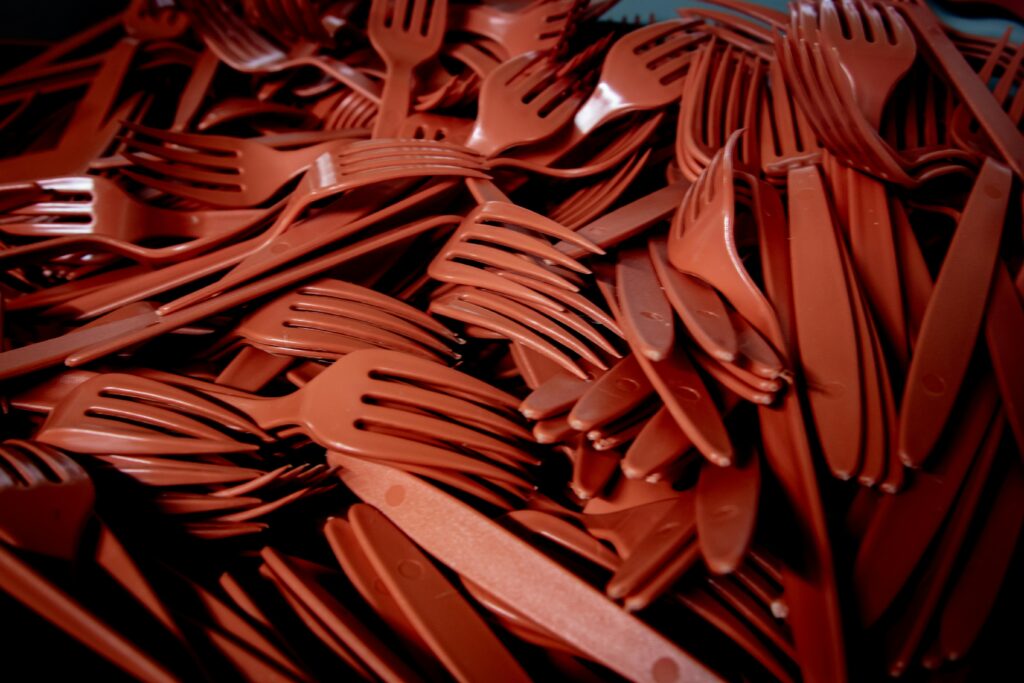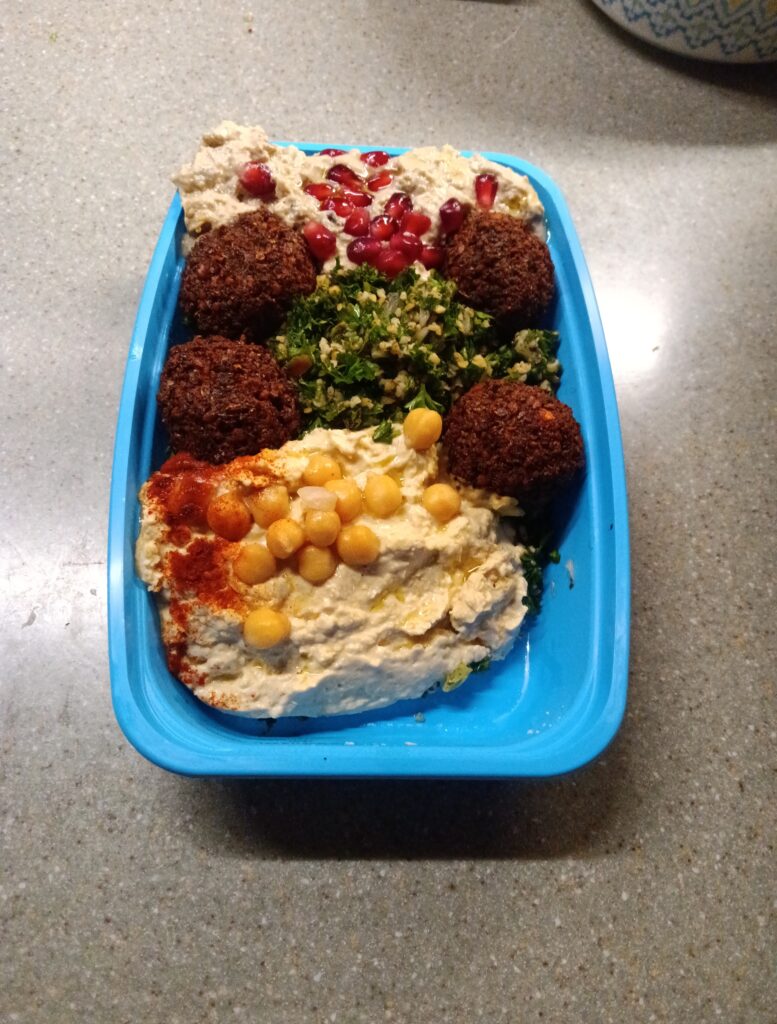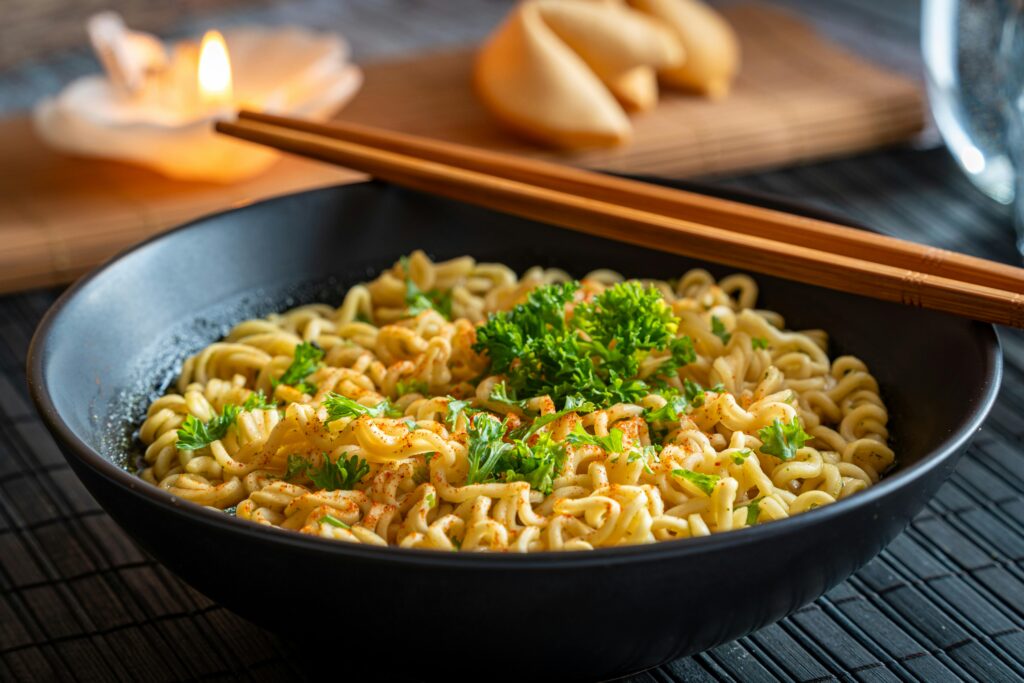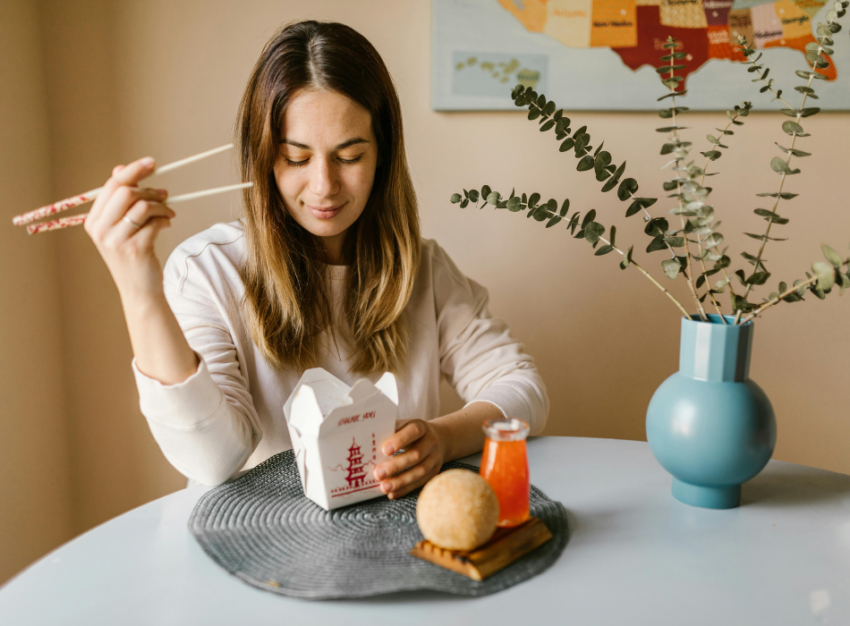I don’t get takeout very often. When I do, I normally pick it up from a restaurant within walking distance since I feel bad about the emissions from delivery. I also feel bad about all the single-use containers that accumulate: black takeout containers, clamshell containers, deli containers, sushi trays, sauce cups and more.
Canadians produce an estimated 3.3 million tonnes of plastic waste per year, much of which ends up in landfills or our environment. More than one-third of plastics in Canada are created for single-use products or packaging.
Takeout harms the planet in other ways as well, including the emissions from delivery vehicles and the food waste if leftovers are tossed.
Ordering takeout will never be great for the planet. But there are steps you can take to make getting takeout less of an environmental nightmare!
Eco-friendly takeout tips
From ordering through eating and disposal, try these tips to make your takeout habit more eco-friendly!
Consider the restaurant’s location and the form of transportation
Think about the restaurant’s location. Can you find an interesting restaurant within walking or biking distance, so you can pick up the food yourself without generating any emissions? Or if you’re getting food delivered, try to order from a restaurant that’s in the same end of town as you, so the delivery vehicle at least doesn’t have to travel halfway across the city.
Order directly from the restaurant
Though food delivery apps like Uber Eats and Skip make ordering food convenient, they cause problems for restaurants. These services charge high commission fees (up to 30%) and leave restaurants dependent on a third party. Many restaurants are already struggling to make a profit. Let’s support local by ordering directly from restaurants!
Refuse single-use items

Takeout orders usually come with a plethora of single-use items, such as plastic cutlery, chopsticks, napkins and pouches of condiments. In most cases, if you’re eating at home, you already have these items and don’t need to get them from the restaurant. When you’re placing your order, specify that you don’t want these items included with your order.
Takeout often comes in a plastic or paper bag. If you’re picking the food up yourself, why not bring a reusable bag and ask staff to use that instead?
Bring your own container
The extension to the previous tip is to bring your own reusable container to avoid receiving any single-use products. Ask if the restaurant can put the food in your container instead. This may be easier at a restaurant that you’re already familiar with. As long as the container is used a certain number of times (four to 13 times, according to a University of Michigan study), reusable containers have a lower lifetime environmental impact than single-use containers.
However, it’s worth noting that some municipalities or restaurants may not allow you to bring your own container due to health concerns. If you live in Toronto, check out this list of businesses that accept reusable containers.
Try a reusable container system

Some cities have a reusable container system at restaurants, where you can order your food in a reusable container and then return the container to any participating location. A couple examples here in Toronto are Friendlier and Suppli.
These programs vary in terms of how they work, but they often involve downloading an app, paying a refundable deposit and scanning a QR code when you return your container. Generally, the company will take care of washing and sanitizing the containers.
While working on this blog post, I tried ordering food in a Friendlier container. The process was straightforward since I was able to request that my food be put in a Friendlier container when ordering online. Returning the container was as simple as scanning the QR code and dropping the container in a return bin. Pro tip: Check with the business before setting out—I found that the map of participating locations wasn’t entirely up to date.
Reuse and recycle takeout containers
Though standard takeout containers are often called single-use, they can often be used more than once! Try giving your containers a good wash and then reusing them to store leftovers and other food. You’ll find that the containers can be used multiple times before they need to be disposed of.
When it comes to disposal, takeout containers can often be recycled. However, be sure to check with your municipality since in Toronto, for example, black plastic cannot be recycled.
Love your leftovers

Restaurant meals often come in big portions—more than you can eat in one go. Personally, I like eating leftovers from restaurants since the food is more exciting than anything I could cook (and more expensive!).
However, if you struggle to finish leftovers, try livening them up. For example, you can turn leftover rice into fried rice or toast pieces of naan and top them with a tasty spread. This will help prevent food waste and give your leftovers a new life!
Bonus: Dine in instead
Why not avoid the whole problem of takeout waste and eat at the restaurant instead? That way, you don’t have to worry about cleaning up and can just sit back and enjoy the experience!
When I’m living on my own, I don’t eat out at restaurants much. However, when I do, I find the whole experience luxurious since the staff cook for you, bring the food to your table and clear away the dishes (though as a former dishwasher, I can sympathize with the folks in the kitchen). In our busy lives, sometimes it’s nice to take a bit longer to enjoy a meal, especially in good company!
Sustainable takeout tips
From the disposable containers to the delivery vehicles and food waste, takeout isn’t known for being particularly sustainable. While these impacts can never be completely eliminated, there are steps you can take to enjoy the occasional takeout meal and not feel too guilty.
I want to know: Do you order takeout often? How do you do so in an eco-friendly way? Is there a reusable container system where you live?
Categories and tags:
Share this post:


Whenever I have brought my own re-useable container to restaurants for take out, it has been welcomed by the staff or owner (this really only works well when placing the order in person). Similarly, when I get things that need a container from bakeries and other food stores, I try to bring my own container – which has been equally welcomed. I do this both in solidarity with small businesses (disposable containers are an unnecessary expense) and for environmental reasons.
I’m glad to hear you’ve had success bringing your own reusable container to restaurants for takeout! That’s a great point that you can also bring reusable containers to bakeries and other types of food stores. It’s so important to support small businesses. Thanks for sharing!